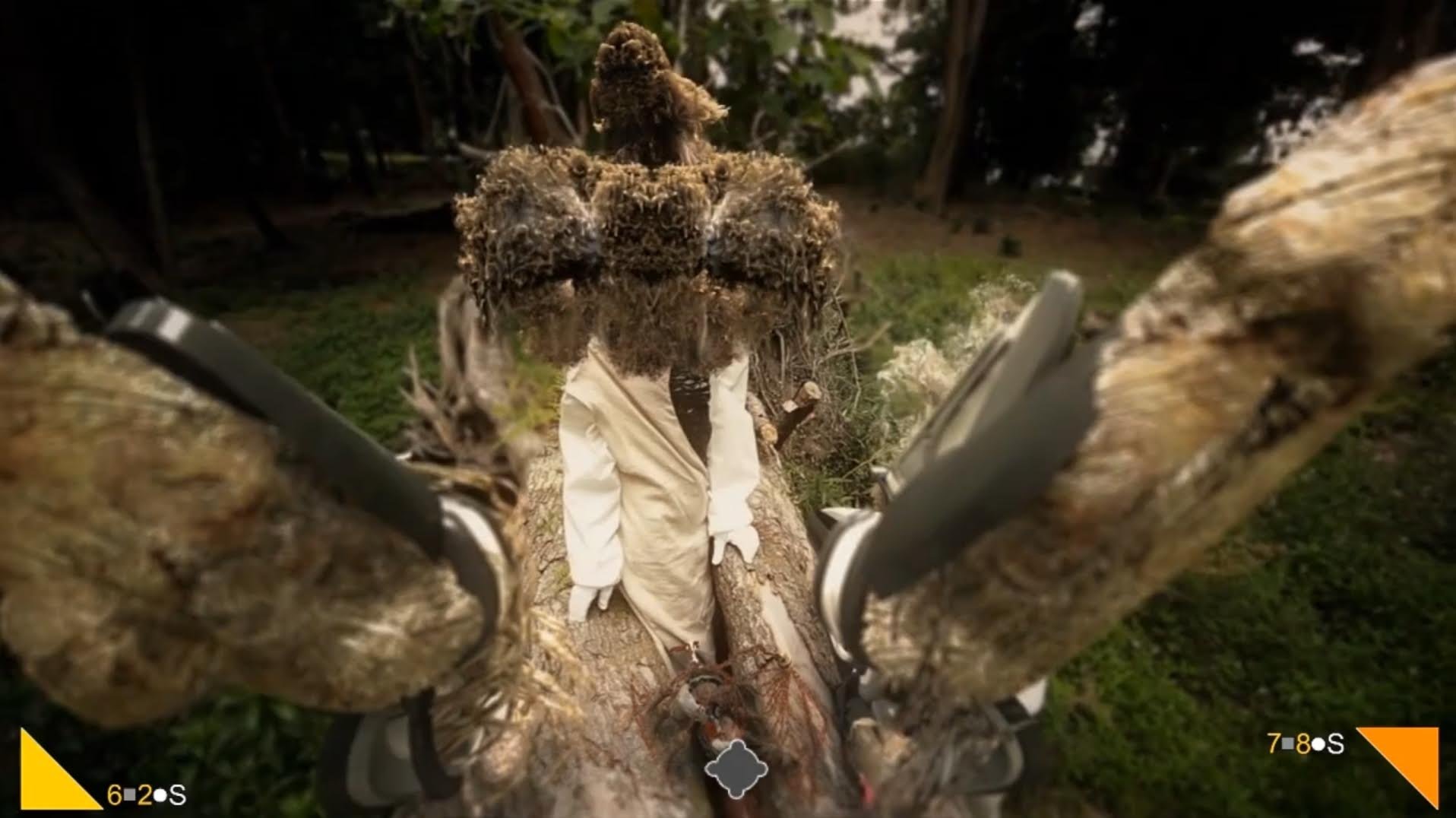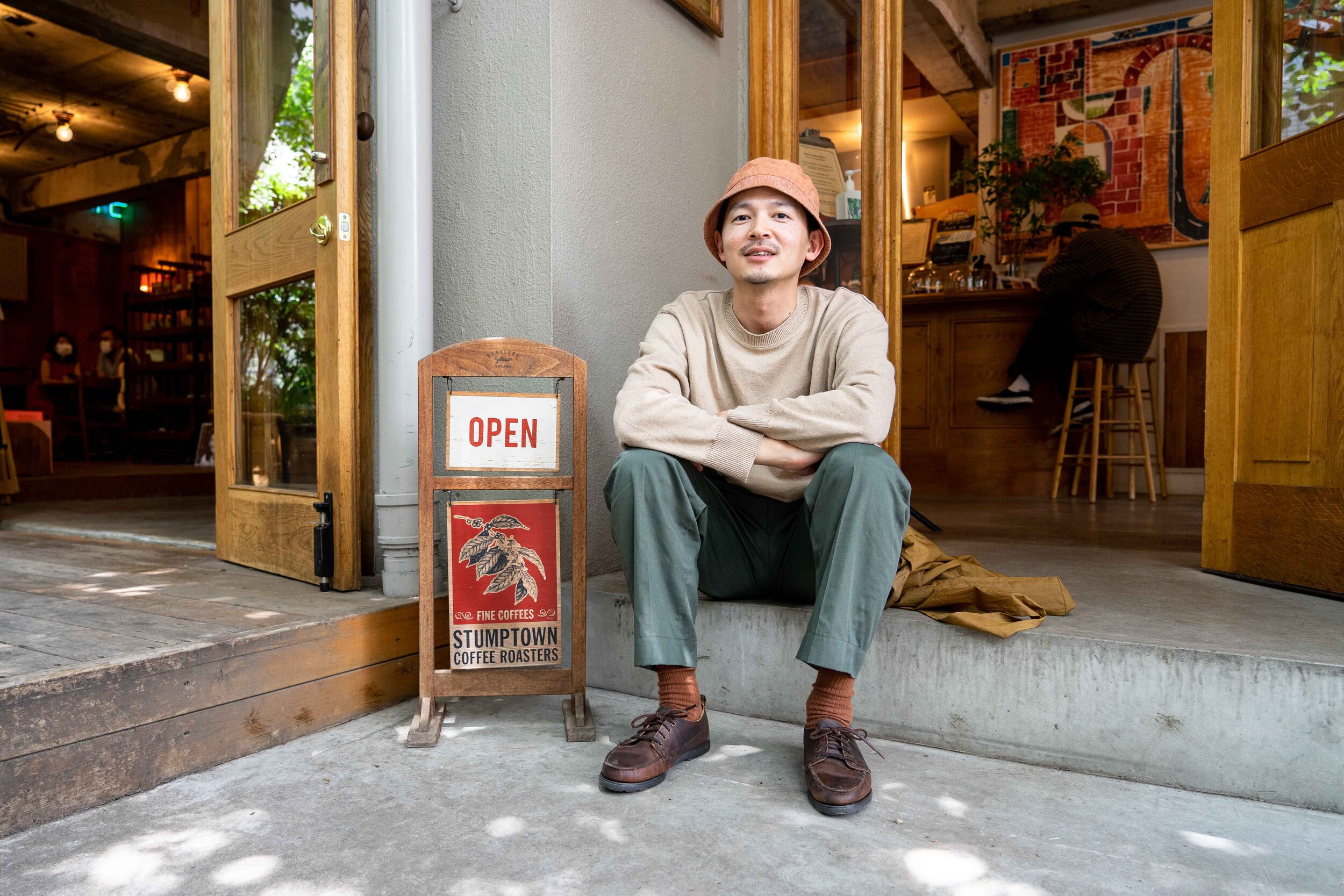THE BLURRING BEYOND: THE NEO-SHINTO CGI VISIONS OF AUJIK

AUJIK began as a self-described, Neo-Shinto tech cult. Observing nature as ancient technology, they created hybrid organic/machine artifacts with conscious minds for contemplation and spiritual practice.
The term 'world building' is often loosely used, but Stefan Larsson, the brainchild behind AUJIK, has been at it for a very long time. With a decade-plus body of work, the Swedish-born, Japan residing artist has been crafting immersive visions of post-singularity futures with cutting-edge 3D software and techniques. Conceptually, the video works are an inspired amalgam of speculative concept connections from prophetic sci-fi visionaries, the natural sciences, and esoteric philosophies and movements.
They are portents of possible blurring to come, evidenced by the advent of AI, robotic-advancement, and aspirations to manifest the metaverse. When Terence Mckenna spoke on the parallels between evolving cyber-technology and shamanic-technology, stating “the drugs of the future will be much more like computers and the computers of the future will be much more like drugs,” the artifacts of AUJIK are on that indiscernible tech / nature deep future trajectory.
The video works have received accolades from around the globe, including Prix Ars Electronica, SIGGRAPH Asia, Japan Media Arts Festival, Denver Digerati, and Moscow-based media art foundation, Generative Gallery, which is hosting and curating his works on a 1000m² display at the ToDa Theater in Dubai.
We spoke with Stefan about the inspirations, how the concept of AUJIK and its works have evolved, collaborations, and what we can expect moving forward.
You've created a considerable body of work over the past 14+ years. How has your process and vision evolved over this time?
Since I started working with AUJIK around 2005, I’ve been going through plenty of phases while trying to keep the essential concept somehow intact. The core element has been these so-called artifacts included in several of the videos during the years in various configurations and constantly evolving. They started off in a more simplified design, resembling symbiosis between organic and synthetic bodies that consists of a vast computational capacity that more or less equals all the people that have ever lived on this planet.
Further on, my videos became more abstract, complex, and nuanced, representing organs in the brain – particularly the limbic system. Some of my videos had more specific topics, usually regarding Artificial Intelligence, neuroscience, animism, and pseudoscience. When I started working with CGI, I didn’t have any knowledge at all, so it’s also been a learning process throughout the years while discovering new software and abilities. Often, some new acquirements would end up in a video project I’d never thought about before, just to see how it ends up — especially while working with particle simulations and more abstract CGI animations.
I think that’s the reason I’m still primarily using computer graphics as my weapon of choice. It always makes me excited to see new results and discover unfamiliar frontiers. Recently I’ve been into making projects as spontaneous and direct as possible, just spending 1-3 days on it working with this GPU render engine called Octane. Earlier I spent around 2-4 months on most of the videos.
I understand that you've been revisiting older works— what was the inspiration behind this?
One of the first videos I made using CGI was in 2007. It was filmed in Nara around Wakakusa mountain with plenty of deer that inhabit Nara city. The video was called ‘Oblivion’ and was the first one presenting these artifacts I just mentioned. It was filmed with a static (tripod) digital video camera in low resolution, so I initially wanted to compare how it would be to film there now with a Steadicam in 4K. For about the last decade, most of my videos were filmed with Steadicam and then motion tracking software integrated with 3D animation.
Also worth mentioning is I used a 360 cam (or, in earlier days, a chrome ball) to shoot HDR images for reflection and light sources. I used to carry around a huge backpack with all this equipment, while now I can have it all in one pocket, so it is extremely convenient and easy to handle. The new Nara video called ‘Tschandalacene’ became slightly different than planned but has the same basic setting with these artifacts resting in the grass with the deer.
The idea of the video is to depict fictional eras after the Anthropocene, starting with something similar to the Technological Singularity (an era when machines become superior to humans). During this aeon, Nara gradually goes from being a physical version into a simulation of itself and then further cracking up into an unknown state. Throughout the video, there are several synthetic entities with various abilities that impact the evolution of Nara. I’ve become a bit inspired from a lecture I watched by Donna Haraway talking about the Chthulucene and Capitalocene, which are also fictional eras.
You've drawn inspiration from many influences including Alan Watts, Aphex Twin, and Metabolism architecture. What might you describe as your core sources of inspiration and perhaps what has influenced your work more recently (and why)?
I think I am obliged to bring up electronic music to start. Artists like Aphex Twin, Autechre, and Boards of Canada had an enormous impact on me when I began working with AUJIK on a sketch level. If I hadn’t discovered that genre, I would probably not be doing this. That genre felt so perfectly futuristic, innovative, and convincing in the mid to late ’90s. It triggered my mind and got me more into sci-fi and future visionaries like William Gibson, Vernor Vinge, and Ray Kurzweil. I’m interested in many other things, but as for AUJIK, these were some of the most important inspirations.
I would also further add Zen Buddhism, animism, and neuroscience. Around 5-6 years ago, I also got into architecture more and discovered some of these fields. As you just mentioned, one was Metabolism architecture, so I made this video filmed in Osaka called ‘Spatial Bodies’ that portrays an urban landscape as a self-replicating and autonomous organism. I then did several similar projects, all filmed with a drone — usually just experimenting with architecture, and two years ago, I made another version of Spatial Bodies filmed in Hong Kong and Shenzhen. Besides metabolism, I’ve also become more inspired by Brutalism, especially Spomenik’s (monumental concrete structures) in former Yugoslavia and Eastern Europe. Additionally, more contemporary architecture from Kengo Kuma, Zaha Hadid, and Tadao Ando has been influential on various levels.
For the last year, I more or less unconsciously got into fungus and all their intricate networks like Mycorrhiza and how it lives in symbiosis with trees and plants, so some of my recent videos have that embedded in it.
How do you see the AUJIK philosophy reflected in light of the times?
That’s something I’ve been thinking about lately. One thing definitely worth mentioning is that I’ve always had distance from the pseudo-philosophical ideas that AUJIK presents. Sometimes it’s a bit ironic and deliberately naïve, perhaps seen from a child’s perspective, while some more serious subjects are also obviously involved. I think the soil where I plant these thoughts is pretty rigid and serious while the vegetation that rises could be more obscure and outlandish, grooving in all directions. I guess I’m a bit influenced by some postmodern philosophers like Derrida and the idea of deconstructing and Gilles Deleuze och Félix Guattari’s systems. I often tend to shuffle all sorts of topics and combine them with other matters and theses and see the outcome.
What can we expect in the future from AUJIK?
I feel like I’ve been spinning in the same circle for the past years, just making CGI videos endlessly so I could work on some other new media formats or something more physical even. In the past, I made some VR projects and spent a whole year working entirely with AR for a project commissioned by STRP (a new media art platform) in Eindhoven, so I would like to get into that again.
I’m currently working on a spatial video project with over 20 frames for a digital museum in Dubai called ToDA curated by a Russian gallery called Generative Gallery. This is something I have never done before, and it is really exciting and challenging. I also had plenty of exhibitions at huge public LED screens in Denver, Colorado (at the Supernova by Denver Digerati), Beijing, China, and around Stockholm city in Sweden for the last year. I am really into large formats and wish I could make more of that in the future, especially multi-channel and projection mapping. I also have some new collaborations coming up and some other exhibitions on the horizon.
Introduction + Interview by Carver Wilcox
Art-Direction by Mr.X
Words by Stefan Larson of AUJIK
Image + Video Credits:
The limbic empyrean. Year: 2021. Music specially composed by dvdv. Presentation video for an immersive video group exhibition at ToDa, Dubai 2021-2022. Curated by Generative Gallery, Moscow.
-
Impermanence Trajectory: stained seed. Year: 2014. Music specially composed by Mira Calix featuring cellist Oliver Coates.
-
Edyth - Brother Dub. Year: 2020. Official music video for Kuwait city based electronic artist Edyth.
-
Tschandalacene. Year: 2021. Music by dvdv – 00052 from the album - What is the opposite of Ambivalence. © dvdv
-
Spatial Bodies: Hong Kong & Shenzhen. Year: 2019. Music specially composed by Daisuke Tanabe. Commissioned video project by UABB Shenzhen. Supported and represented by BANK mab society gallery, Shanghai.
-
Edyth - Brother Dub. Year: 2020. Official music video for Kuwait city based electronic artist Edyth.
-
YUKI. Year: 2008. Music by christ. – one sunny cloudy day, from the EP - Vernor Vinge. © Christ. and Benbecula records. score by aujik
-
Dax J - Simulated Reality (Terafactory AI Electronics). Year: 2021. Official music video for British techno artist Dax J.
And see upcoming shows:
"Dream" at ToDa Theater, Dubai: Nov 23 to 28 Feb 2022. Featuring a physical and online NFT exhibition. Artists: AUJIK (Japan), Francois Quevillon (Canada), Kohui (South Korea), Aizek(Russia), Daniel Rossa (Germany), MAOTIK (France), Laszlo Bordos (Hungary). Curated by Generative Gallery, Mosco.
Bank Galleri in Söderhamn, Sweden: Nov to Jan 22 (Solo exhibition) Curated by Fredrik Skogkvist.
theWrong at CENTRE POMPIDOU, Paris: February 23 to April 25, 2022 (Group exhibition) Curated by David Quiles Quilló.
Biwako Biennale 2022. ‘Origin’. Hikone castle, Shiga, Japan. Curated by Yoko Nakata.











